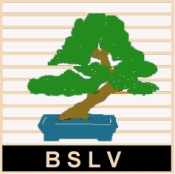




Bonsai Society of the Lehigh Valley (BSLV)
Bonsai Facts
Bonsai/Penjing is a living art form, partly horticultural and partly three dimensional design. Literally the words translate into the culture of trees that have been miniaturized in pots. Originating in China as collected mountain trees known as penjing, the art form went through significant changes from grotesque forms to a more natural approach based on observations of nature by the Japanese, who call it bonsai. The Japanese suggested a series of styles and basic principles to simplify design. Today, bonsai is popular all around the world and the approach to cultivation and design varies widely. Shaping is done by pruning away excess branches while wiring others to the shape desired. Size is controlled by seasonal pinching of new growth and periodic root pruning accompanied by repotting into an appropriate container. Bonsai/Penjing can be grown by anyone willing to follow basic rules of horticulture, i.e. adequate light supply, air circulation, watering, fertilizing, pest control, and winter protection. Although traditionally bonsai are outdoor plants, some species can be grown indoors.
Selecting Material for bonsai is critical for a successful result both horticultural and aesthetical. The desired basic characteristics are surface roots, tapered trunk, woody bark, branch placement, foliage in scale and overall general health.
Bonsai can be developed from standard propagation methods (seeds, cuttings, grafts and air layers), mature nursery stock, plants from the wild and ready-made bonsai.
In selecting material, there are two basic types: indoor and outdoor. Some species are adaptable to indoor conditions; however, most plants suitable for bonsai must be kept outdoors. Outdoor trees are not houseplants and need to go through natural seasonal changes. These changes are especially enjoyable with deciduous trees where the foliage turns color and drops in the fall and returns in the spring with lush new growth. The ideal outdoor location for display is a bench or table where proper light and air circulation exist. Under normal conditions, it is necessary to thoroughly water a bonsai every day during the growing season.
Some popular outdoor trees are: Juniper, Pines, Spruce, Cedar, Larch, Hemlock, Cypress, Redwood, Cryptomeria, Yew, Holly, Azalea/Rhododendron, Cotoneaster, Pyracantha, Ivy, Boxwood, Maple, Elm, Ginkgo, Beech, Hornbeam, Hawthorn, Wisteria, Apple, Cherry, Quince, Zelkova, Witch Hazel, Wisteria and Forsythia.
Trees referred to as indoor are actually sub-tropical and tropical plants. Some of these trees are referred to as “houseplants.” Their care and maintenance is the same as the hardy material during the growing season; however, they cannot tolerate temperatures below 40 degrees Fahrenheit. Their winter care is considerably different and they must be moved indoors for protection in the Autumn. The location can be a sunny window or under fluorescent lights. Indoor bonsai benefit from the addition of extra humidity.
Some of the best indoor trees are: Aralia, Boxwood, Bush Cherry, Ficus, Gardenia., Holly, Jade, Myrtle, Natal Plum, Olive, Podocarpus, Pomegranate, Schefflera, and Serissa.
Learning About Bonsai is not a mystery. In essence, it is a challenge requiring some horticultural knowledge and artistic sensibility. Design principles have become generally accepted as guidelines. Novices can find these guidelines expressed in words and images in the books of the suggested reading list. The other challenge of bonsai is enjoyment of creation. Ready-made bonsai can be purchased but novices should strongly consider the challenge of developing their own plants. To further enhance the suggested reading materials, the novice should plan to enroll in lessons with a professional bonsai teacher. In addition, they should attend lecture/demonstrations and workshops which are provided by BSLV. These activities will increase the enjoyment and knowledge of any bonsai student. Finally, to develop confidence and experience, the novice should practice with inexpensive nursery stock. With proper care, a bonsai will remain healthy and beautiful for many years. The information in this brochure is necessarily brief but there are many fine books available on bonsai in libraries, bookstores and garden centers.
Books:
A few recommended references are:
About Us |
Contact Us |
Bonsai Facts |
Membership |
Newsletters |
Schedules |
Officers |
Home